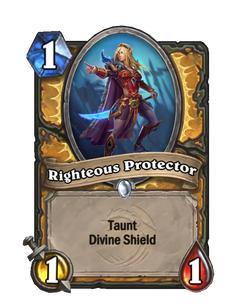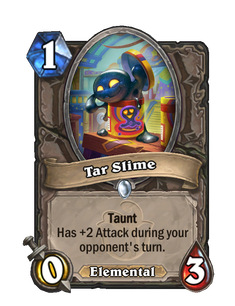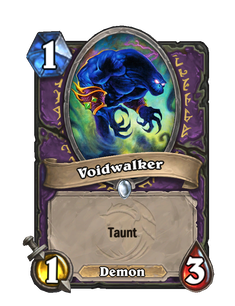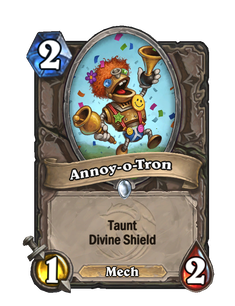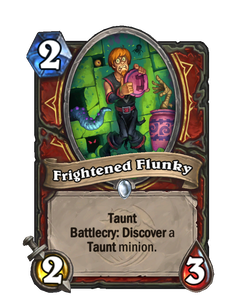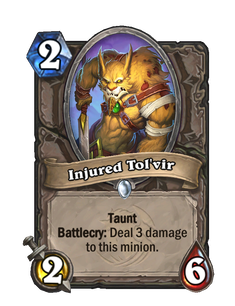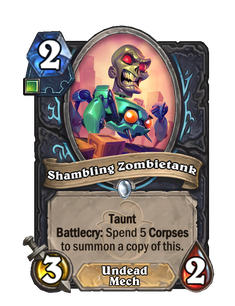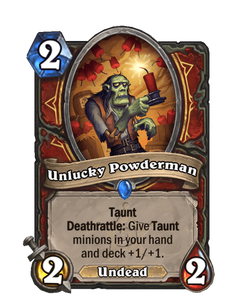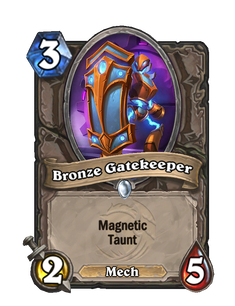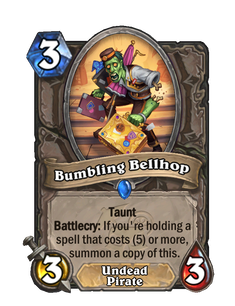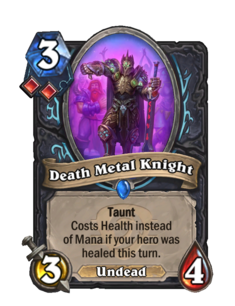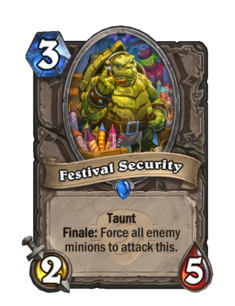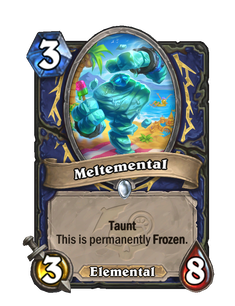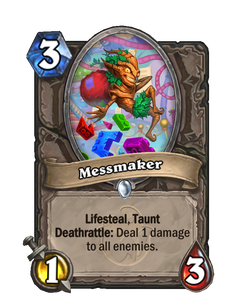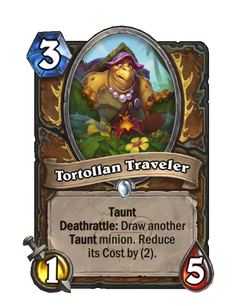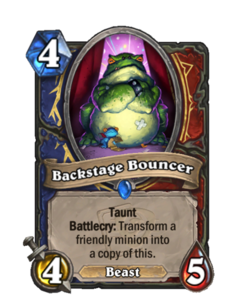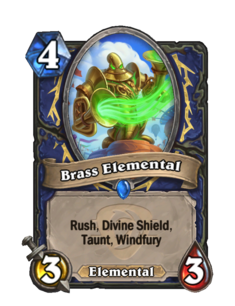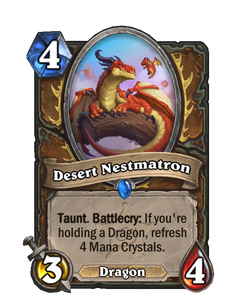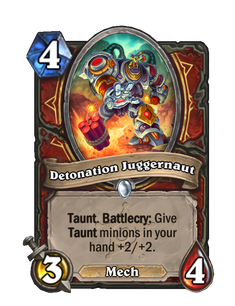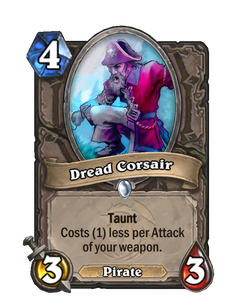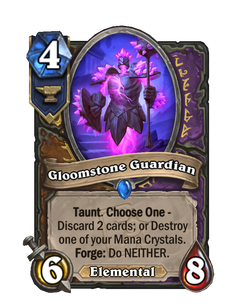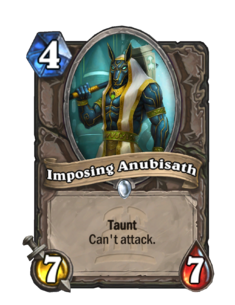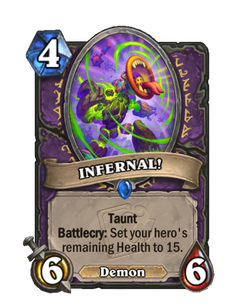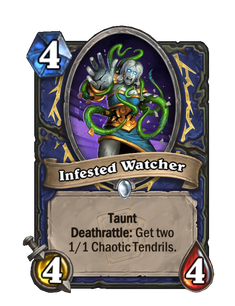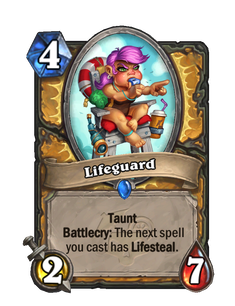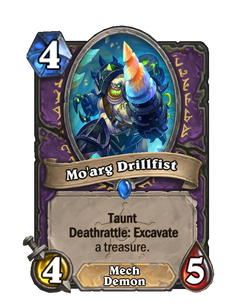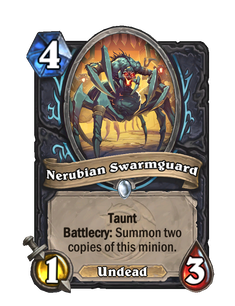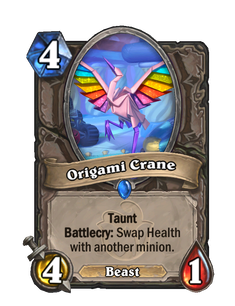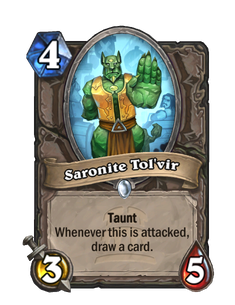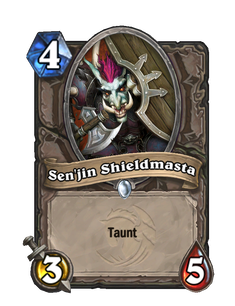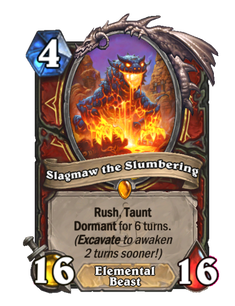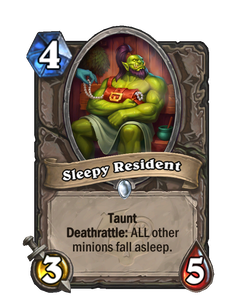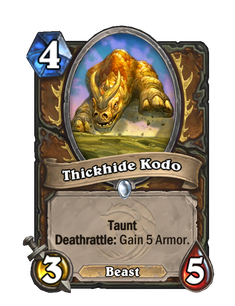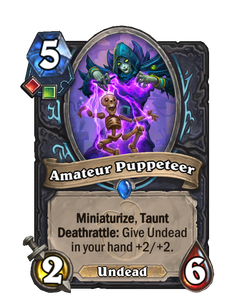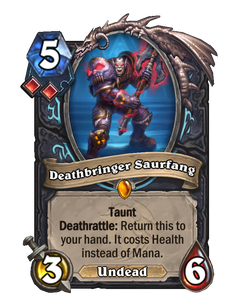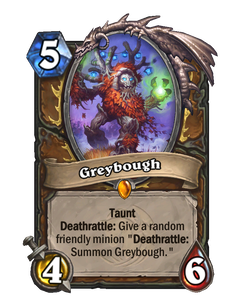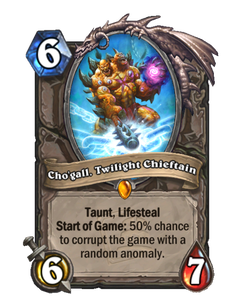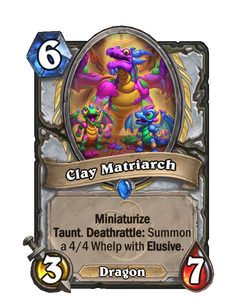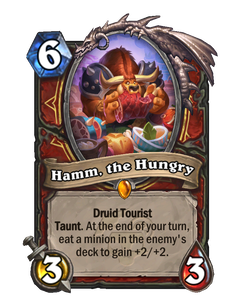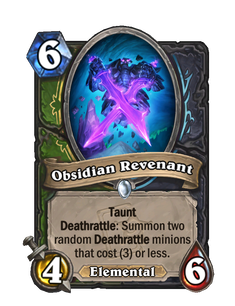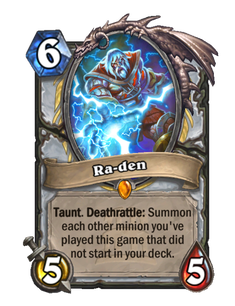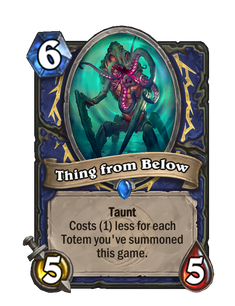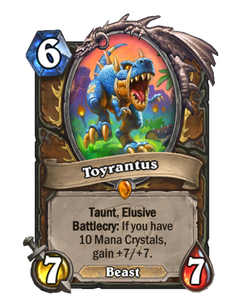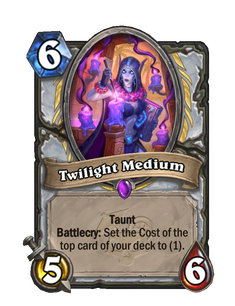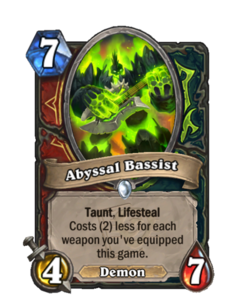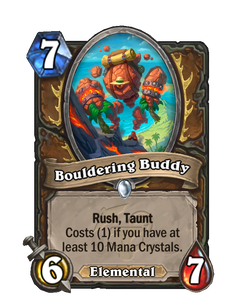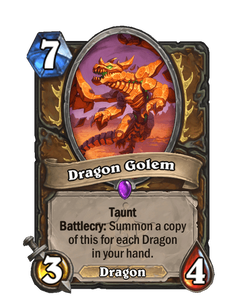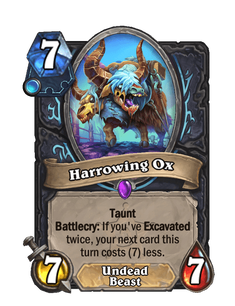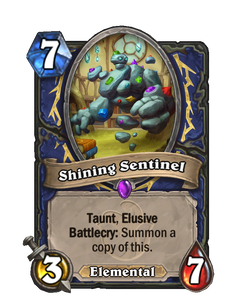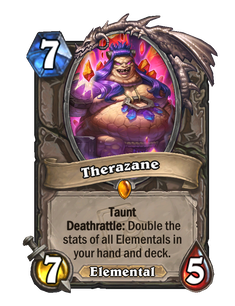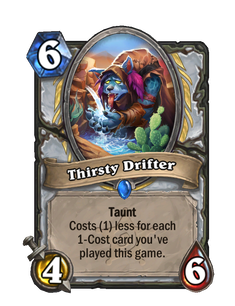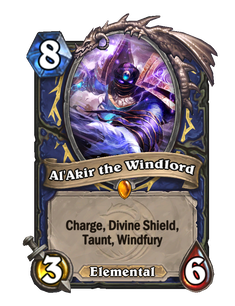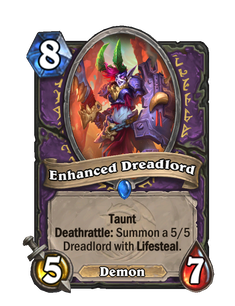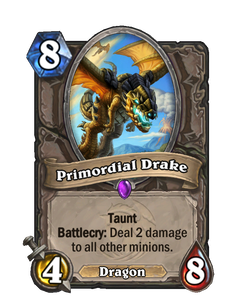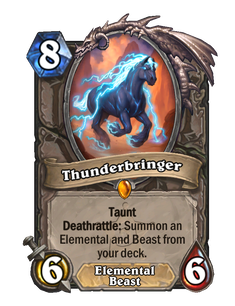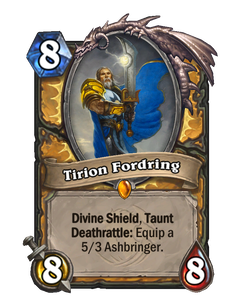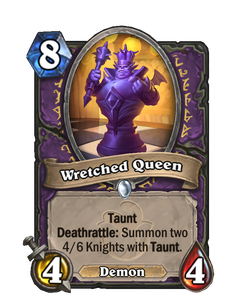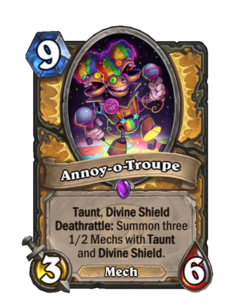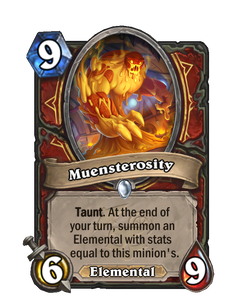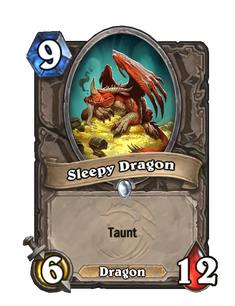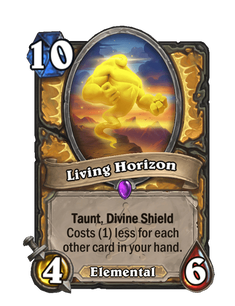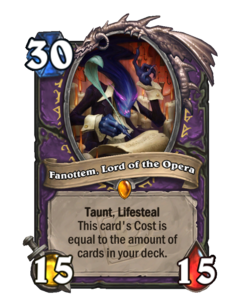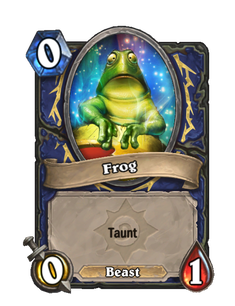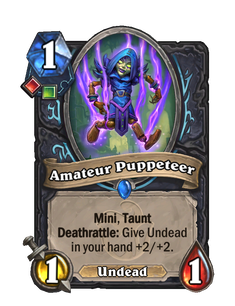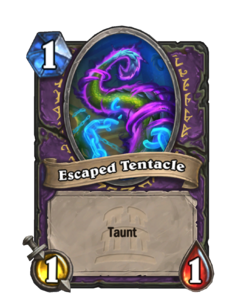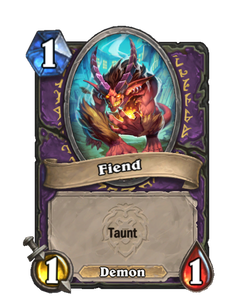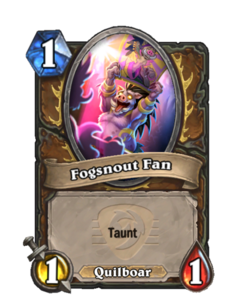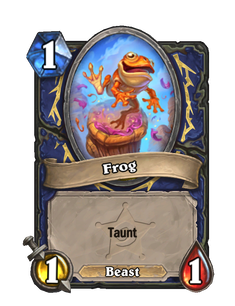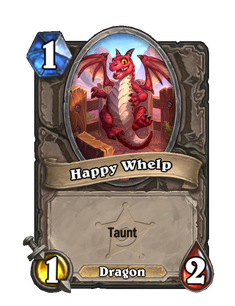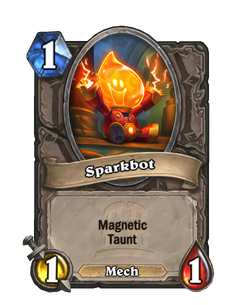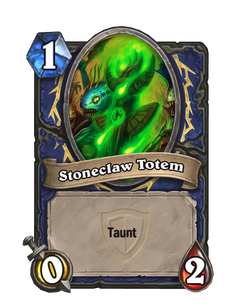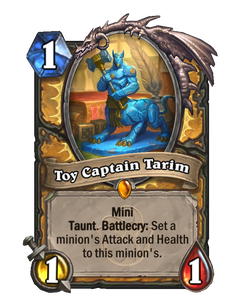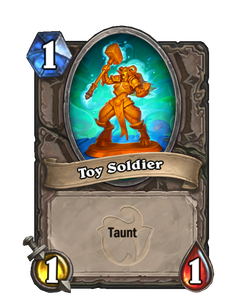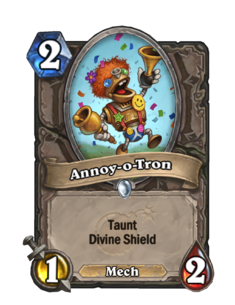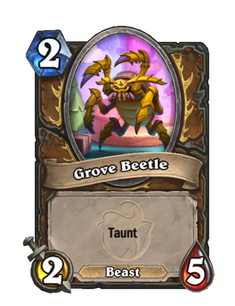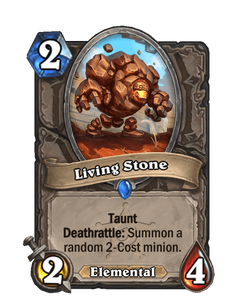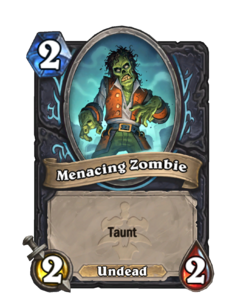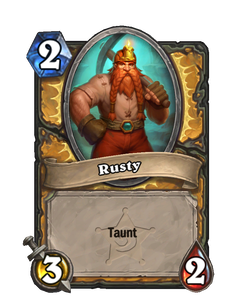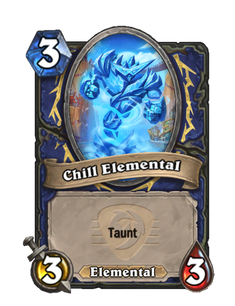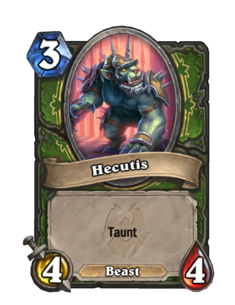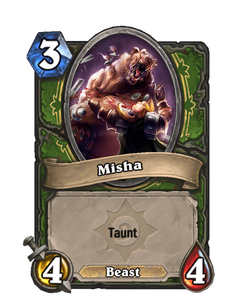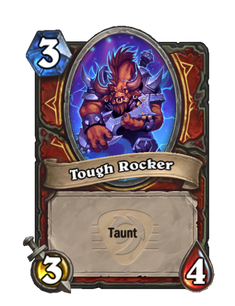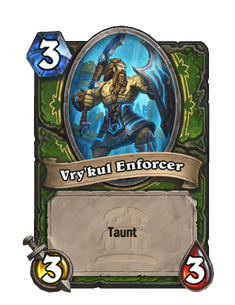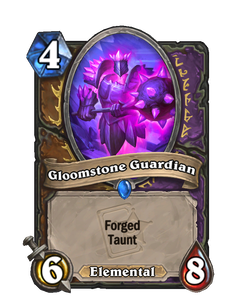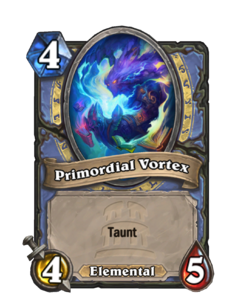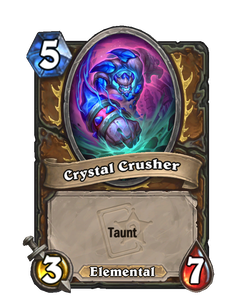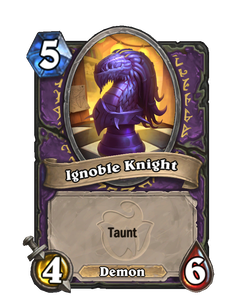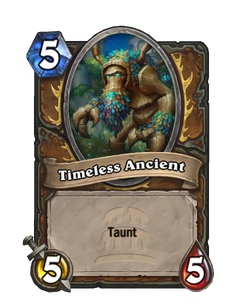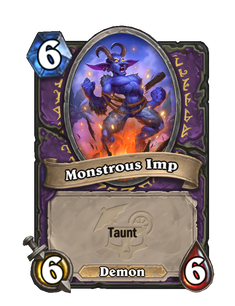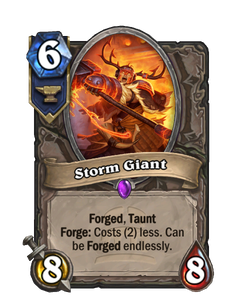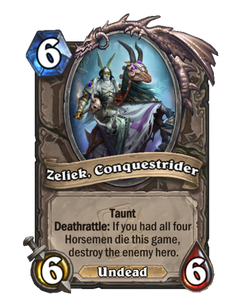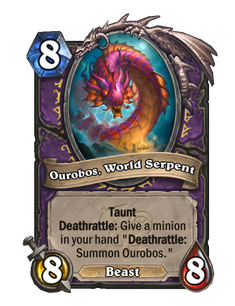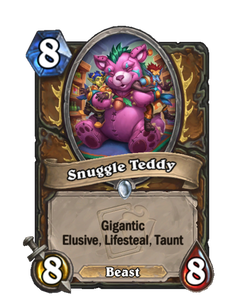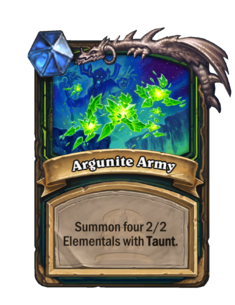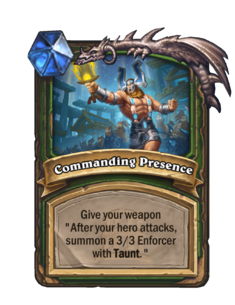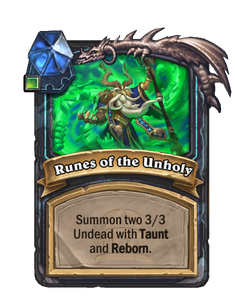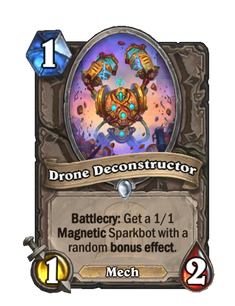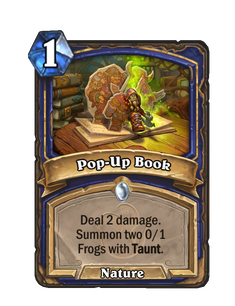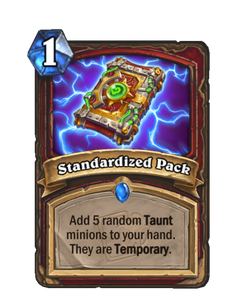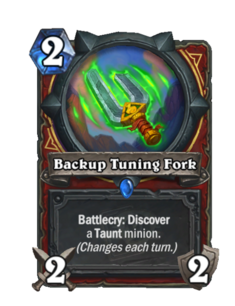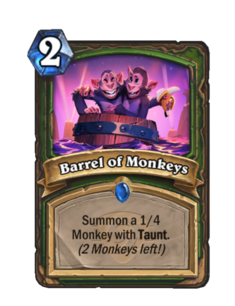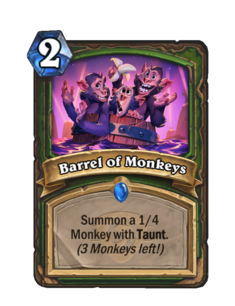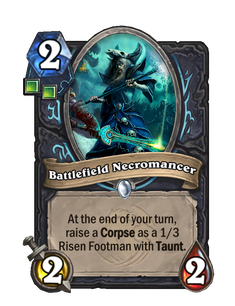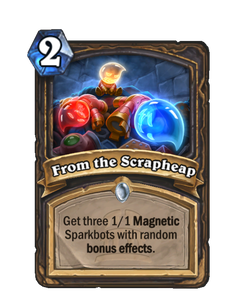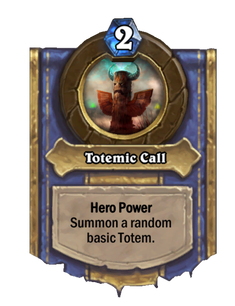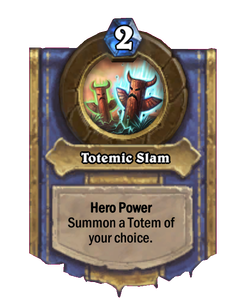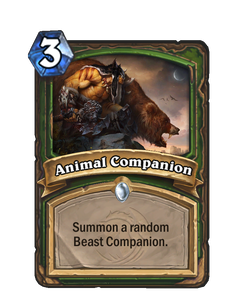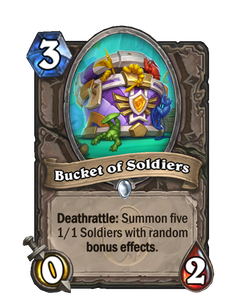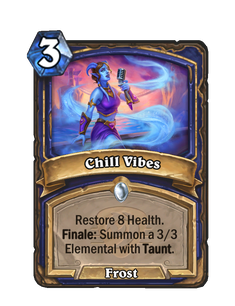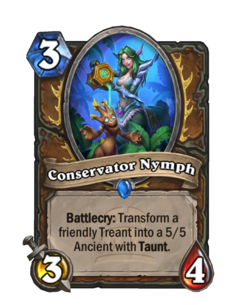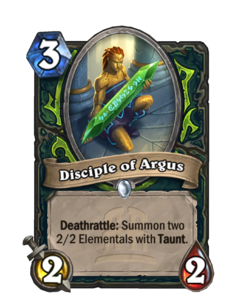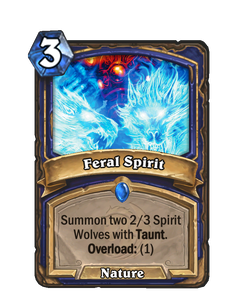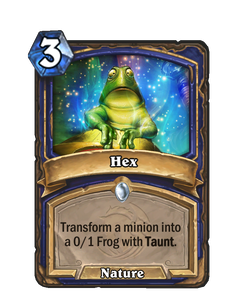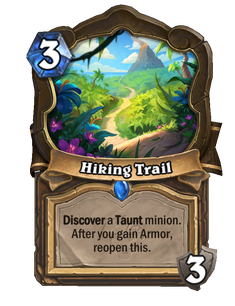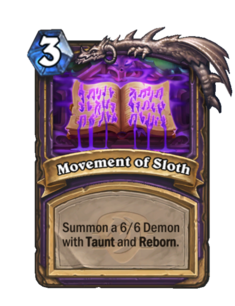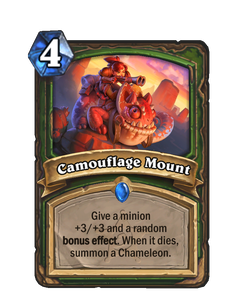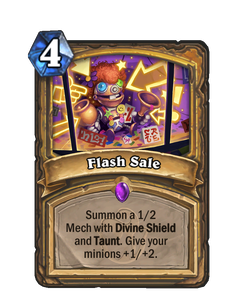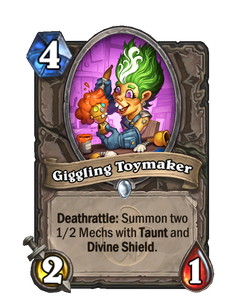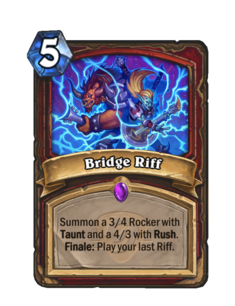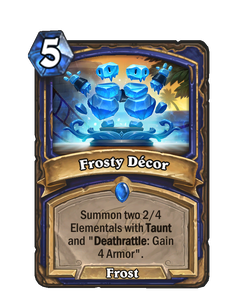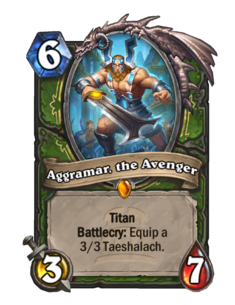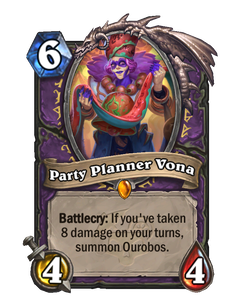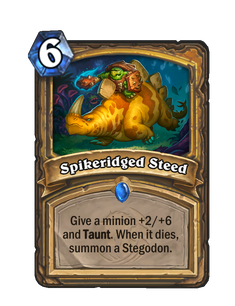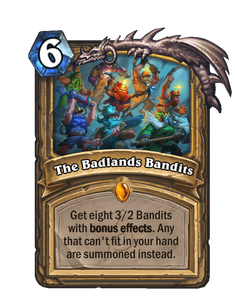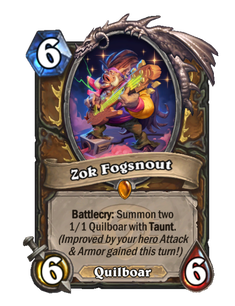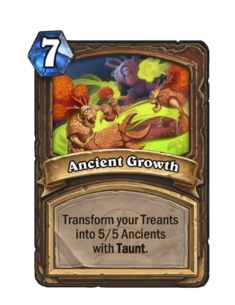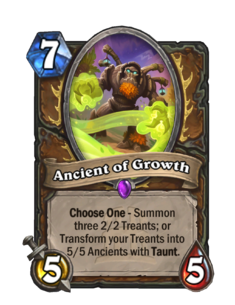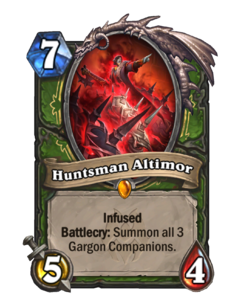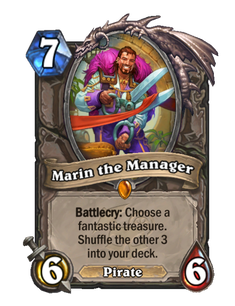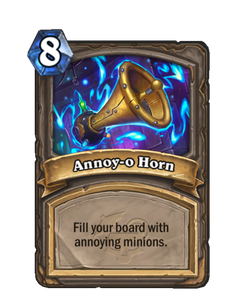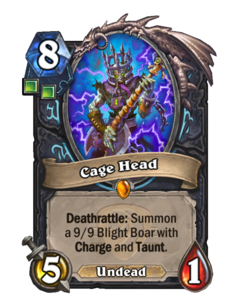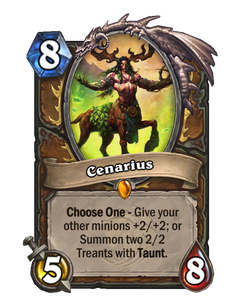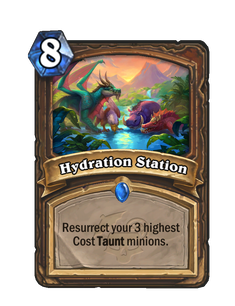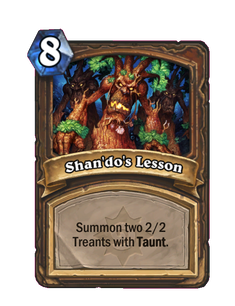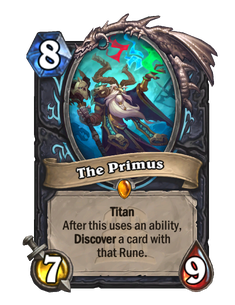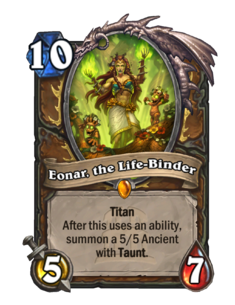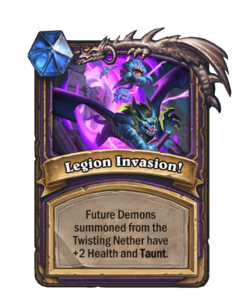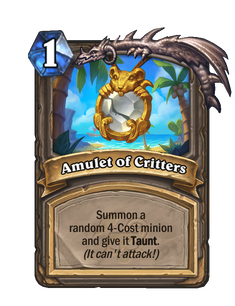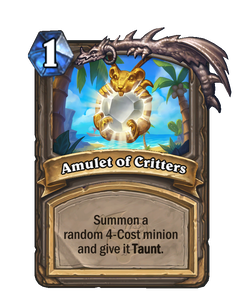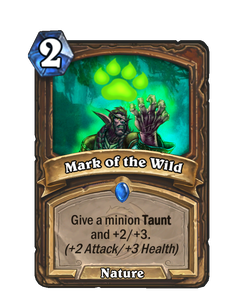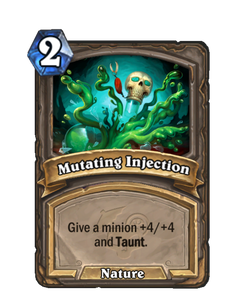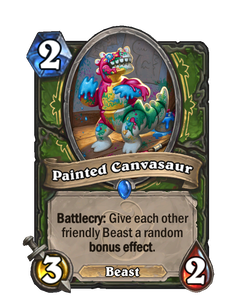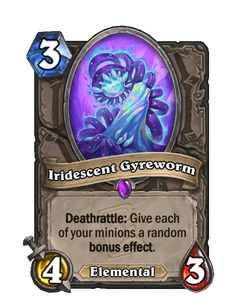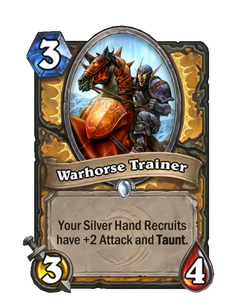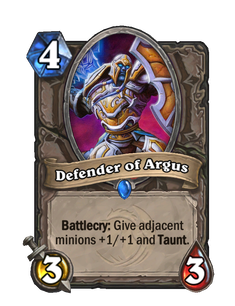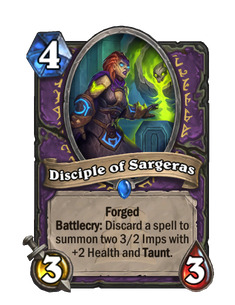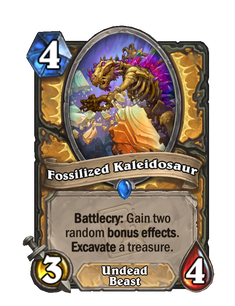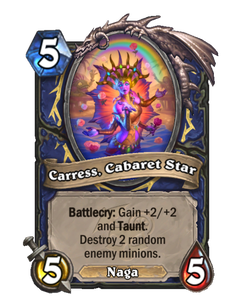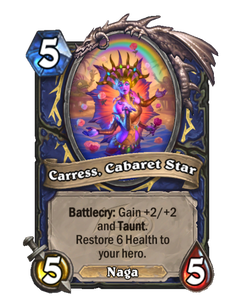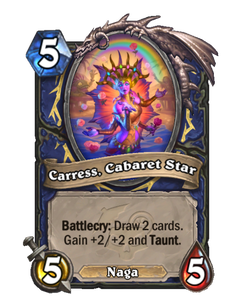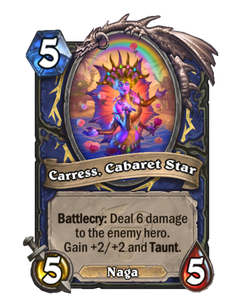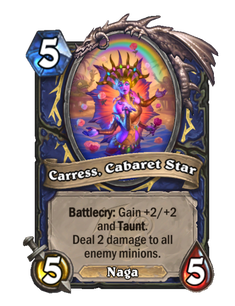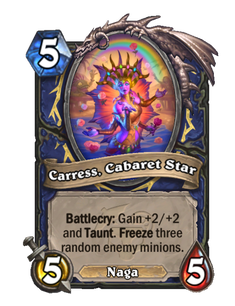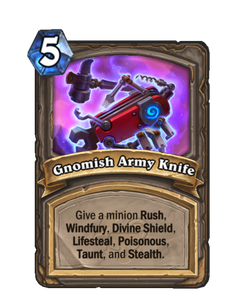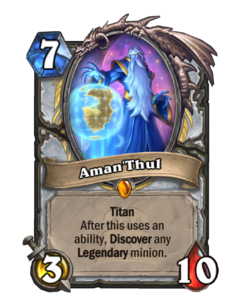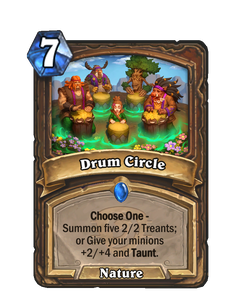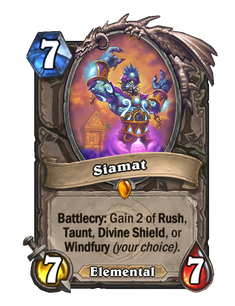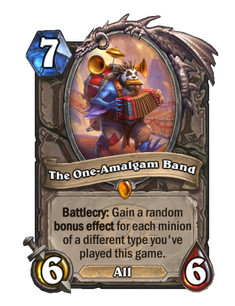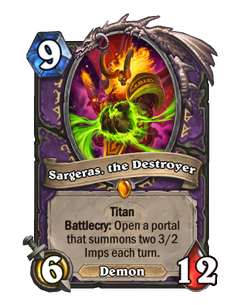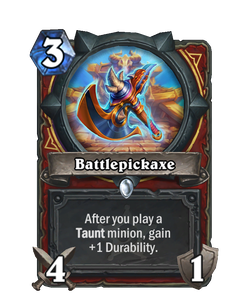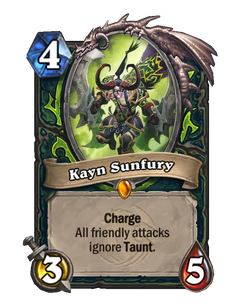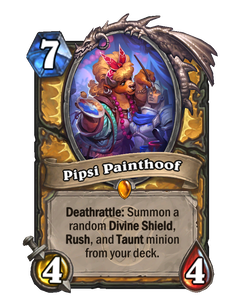Taunt
- Taunt
Enemies must attack minions that have Taunt.
Taunt is a minion ability which forces the opposing player to direct any melee attacks toward enemy targets with this ability.
Minions with Taunt (commonly referred to as Taunts) serve to protect their allies by forcing the enemy to deal with them first, preventing them from attacking other friendly minions or the controlling hero until the Taunts are removed. However, Taunts have no effect on spells, Hero Powers or other damaging effects. Minions with Taunt are displayed on the battlefield encased in a shield.Taunt is mainly useful to counter aggressive decks, which focus on dealing damage to your hero, but is still one of the strongest abilities in hearthstone.
One of the most powerful effects in Hearthstone, confusion over how Taunt works is one of the main reasons new players quit the game.[1]
Functionality[edit | edit source]
- The Taunt ability works by limiting which characters the opposing player can target with direct "melee" attacks from their own characters. Only these direct attacks - when a minion or hero physically moves to attack an enemy target - are affected by Taunt. All other types of effects are completely unaffected by Taunt, including spells, Hero Powers, and minion effects such as those of
Elven Archer or
Knife Juggler.
- If the opponent has one or more Taunt minions on the battlefield, the player will only be able to direct melee attacks at one of the minions with Taunt. If they try to attack a non-Taunt target while there is an enemy Taunt minion on the battlefield, they will be given the error message "A minion with Taunt is in the way".
- If the opponent has more than one minion with Taunt, the player will be able to choose which one of them to attack.
- Players do not have to attack Taunt minions, but cannot attack any other characters while there are enemy Taunt minions on the battlefield. A player may choose not to attack at all rather than attacking an enemy Taunt, which may be strategically advantageous.
- As with all minion abilities, destroying a Taunt minion or removing it from the board will immediately take it out of play, cancelling the Taunt effect. The Taunt ability can also be removed from a minion through Silence and Transform effects like
Keeper of the Grove and
Polymorph.
Advanced[edit | edit source]
- A unique conflict comes into play when a single minion has Stealth or Immune and Taunt active. The Taunt effect is temporarily negated by the Stealth or Immunity, and will not take effect until the minion loses its buff.
- Taunt only restricts attacks where the player is selecting a target for a character attack action. Abilities like Auto-Attack and the triggered effect of
Swamp King Dred will bypass Taunt.
- Rush minions can bypass heroes with Taunt, this can be seen in the One Night in Karazhan Adventure encounter, The Curator.
Strategy[edit | edit source]
Taunt is a key strategic ability in Hearthstone. It allows a minion to act as a 'tank', protecting other targets from melee attack while forcing the enemy to attack them first. Critically though, Taunt only affects target selection for melee combat, where the player sends their minion or hero to attack an enemy target. Spells, Hero Powers and ranged attacks, such as that of Elven Archer, are not affected by Taunt, and can be targeted regardless. Non-targeted effects such as area of effect (
Flamestrike) and random target effects (
Arcane Missiles) are also unaffected.
The value of a Taunt minion lies in its ability to dictate the focus of combat on the board. Generally, this is to divert attacks away from more valuable or vulnerable targets, and toward the Taunt. Taunts can be very useful in the late game to prevent the opponent from directing all attacks at the hero themselves, quickly finishing the game. It can also be important for protecting valuable minions such as those with special effects or abilities. Without a Taunt these minions may be quickly removed, preventing the player from benefiting from their effects. Taunts can sometimes also prevent combat outright (for a turn or two), such as when facing down a vastly inferior minion. While the choice between attacking a hero and attacking their minions is a key strategic point in the game, Taunt minions make this decision for your opponent, preventing them from sneaking in extra attacks on your hero and forcing them to focus on your designated champion.
The best Taunt minions generally have a high Health value, allowing them to engage in combat with several enemies before they are destroyed. Health-increasing and healing effects such as the priest hero power can be very useful for topping-up Taunts.
Like all abilities, Taunt represents a points trade-off with other possible qualities. Building the right proportion of Taunt minions into a deck is therefore a key strategic decision. Too many taunts can leave you short on other abilities, or routinely playing minions with lower stats than necessary. Too few taunts can leave your special minions vulnerable, your hero open to attack, and prevent you from capitalizing on their powers. Different classes, strategies and players have different synergies and attitudes to the use of Taunts, with some decks relying on numerous Taunts as a core element of their strategy, and others eschewing them entirely.
Since they only affect melee combat, Taunts are generally most effective against decks which rely on minion attacks to defeat the opponent. Decks which focus on spells or Hero Powers to deal lethal damage will be minimally affected by Taunts.
Taunts generally represent a slowing down of the game, with the Taunt ability usually present on a card in place of additional stats or other useful effects. This makes Taunts effective in control decks which seek to delay the game until they can afford to play their expensive cards or powerful combos. In contrast, Taunts are far less valuable in aggro decks, which seek to defeat the opponent in the first few rounds, since these decks are less concerned about incoming damage, preferring to focus on dealing damage as quickly as possible although cards such as Voidwalker,
Tar Creeper, and
Stonehill Defender are still widely used in aggro decks to protect more valueable minions with higher value, such as
Raid Leader or
Lightwarden.
One key thing to remember in the use of Taunts is that they are always vulnerable to Silences and destroy effects. An indomitable Taunt can be neutralised with a single Ironbeak Owl or
Assassinate, wrecking plans to defend minions or the hero itself,
Shieldbreaker's only purpose is to remove Taunt considering how widely used this effect is. Taunts can also be specifically removed by
The Black Knight, or may be purposefully countered with direct damage spells or Charge minions in order to clear the way for attacks. Transformations can also remove the Taunt ability, although
Hex will not, since the resulting
Frog itself has Taunt. Taunts can be a target of Mind control effects, leaving their previous owner vulnerable. Players may also use return effects such as
Sap or
Freezing Trap to cunningly remove Taunts for a turn or two.
Decks seeking to burst the player down will often use cheap forms of removal such as these before using plays such as Unleash the Hounds to finish the opponent off. Using multiple Taunts can strongly reduce the likelihood of this happening, but cannot prevent it entirely.
Granting Taunt[edit | edit source]
While the Taunt ability is usually granted by the minion's card text, it can also be gained from various enchantments and spells. See the table below for a full list. Granting Taunt to a minion is a highly strategic decision, with consequences which can be hard to predict. It may force the opponent to attack the target first, prompt them to use removal upon the target, or serve to give them a larger selection of targets to attack.
Players often choose to grant Taunt to a powerful minion which can withstand several attacks, or is capable of destroying any minion which attacks it. Giving Taunt to a high-Attack minion may force the opponent to sacrifice a tough minion or suffer substantial damage themselves using a weapon. However, high-Health Taunts are generally considered preferable, due to their increased longevity in the line of fire.
In some particular circumstances, granting Taunt to a valuable enemy minions with cards such as Ancestral Healing and
Mark of the Wild can be efficient too, not only does this cause the minion to be unprotected by other Taunts, making it vulnerable to minions such as
Stoneskin Basilisk and
Stubborn Gastropod, it can also be conveniently destroyed by
The Black Knight.
Taunt can be used to force an opponent to trigger the minion's Deathrattle, such as with Abomination and
Tirion Fordring. Players can grant Taunt for a similar purpose, choosing targets such as
Savannah Highmane and
Cairne Bloodhoof to manipulate the opponent's actions and trigger useful synergies. However, Deathrattle Taunts are easily countered with effects such as silences.
It is almost always preferable to keep valuable targets protected by at least one Taunt, which is arguably the key purpose of Taunts. For this reason, it is generally a bad idea to grant vulnerable targets Taunt, since this strongly enables and encourages the enemy to attack that minion. In the case of Taunt-granting positional effects such as Defender of Argus this can mean sacrificing a value buff, but may still be the better choice. In some cases positional effects can make it impossible to avoid granting Taunt to a minion, making the playing of that card problematic.
Soft taunt[edit | edit source]
Minions described as 'soft taunts', although lacking the Taunt ability, have the potential to give the controlling player such a benefit that its removal or silencing quickly becomes a priority for their opponent. Such minions may have the ability to gain the stats rapidly (Lightwarden,
Secretkeeper), to clear the board (
Doomsayer), to buff other minions (
Murloc Warleader,
Tundra Rhino), to summon them (
Hogger,
Xavius) or to benefit from summoning them (
Knife Juggler), to provide card draw (
Northshire Cleric,
Cult Master), mana discount (
Sorcerer's Apprentice), Spell Damage (
Malygos) or armor (
Armorsmith) etc. Minions may also become soft taunts in certain decks, such as
Injured Blademaster in Combo Priest, which can be expected to be targeted with
Divine Spirit and
Inner Fire. Minions with high Attack but low Health such as
Magma Rager may also act as soft taunts if the player wishes to avoid suffering their attack.
Essentially, any minion which is a priority to remove can be considered a 'soft taunt'. The term is not fixed but is granted subjectively according to a player's sense of priorities.
Because soft taunts generally represent a minion of special value, it is usually to the advantage of the controlling player to do their best to protect these targets. This can help keep the minion alive a little longer, and also force their opponent's hand by requiring them to go to costly lengths in order to remove the minion, before its effects turn the tide of the game against them. However, these strategic decisions hinge upon the perceived value of the minion. Players can use this to lead their opponent to attack apparently valuable minions which are in fact not critical to their strategy. For example, a mage playing a Spell Damage minion can expect their opponent to quickly remove the minion if possible, due to its potential to increase the mage's damage output. However, a mage without any spells in their hand may choose to play a Spell Damage minion simply in order to distract their opponent from another target of greater value. This can cause the opponent to sacrifice a minion or waste a valuable removal spell of their own in order to destroy this apparently important minion, inadvertently clearing the way for the mage to play a different strategy the next round. This can also be used much like a literal taunt minion to buy the mage time or to dictate which of the possible minions the opponent must attack.
Players need to be aware of the attractiveness or 'soft taunt' status of their minions; for example, minions with Spell Damage are often best played in the same round as a damaging spell, ensuring that the minion is not destroyed before the player can get at least some use from its effect.
Cards with Taunt[edit | edit source]
- For Wild format listings, see Taunt/Wild format.
This section lists Taunt minions.
Collectible
Uncollectible
Sources of Taunt
- For Wild format listings, see Taunt/Wild format.
Taunt-generating cards
This section lists cards which generate Taunt minions.
Taunt-granting cards
This section lists cards which grant Taunt to other minions or to itself.
Related cards
- For Wild format listings, see Taunt/Wild format.
Achievements[edit | edit source]
| Category | Name | Description | Rewards | |
|---|---|---|---|---|
| Gameplay - General - Neutral Keywords | Tanks! You're welcome. | Play 100 minions with Taunt. | 10 | |
| Gameplay - General - Neutral Keywords | Tanks! You're welcome. | Play 300 minions with Taunt. | 10 | |
| Gameplay - General - Neutral Keywords | Tanks! You're welcome. | Play 1000 minions with Taunt. | 10 | |
| Gameplay - General - Neutral Keywords | Tanks! You're welcome. | Play 3000 minions with Taunt. | 10 | |
| Gameplay - General - Neutral Keywords | Tanks! You're welcome. | Play 10000 minions with Taunt. | 20 | |
| Gameplay - Stormwind - Neutral | Return of the King | Summon Varian, King of Stormwind with Taunt, Rush, and Divine Shield. | 20 |
Trivia[edit | edit source]
- Cited in 2015 as one of the most common reasons new players left the game, according to Ben Brode a "shocking percentage of players" used to finish the tutorial without understanding Taunt, or even "get stuck" in the King Mukla encounter due to the mechanic.[1] Ambiguous emotes - "I must attack that minion with Taunt" - are cited as the main issue, and have since seen updates.[1]
- Early in development, attacking a Taunt minion would cause it to lose Taunt. However, when a bug cropped up that caused minions not to lose Taunt when attacked, the developers realised that it was much simpler and more fun for Taunts to retain the ability, and the behaviour was kept.[2]
Patch changes[edit | edit source]
 Patch 1.0.0.4944 (Open beta, 2014-03-11): Minions who have Taunt and Stealth now have an effect that more clearly indicates that Taunt is temporarily disabled during Stealth.
Patch 1.0.0.4944 (Open beta, 2014-03-11): Minions who have Taunt and Stealth now have an effect that more clearly indicates that Taunt is temporarily disabled during Stealth.
References[edit | edit source]
- ↑ 1.0 1.1 1.2 Ben Brode on Twitter (X). (2015-03-06).
- ↑ Ben Brode quoted on reddit. (2016-10-03).


